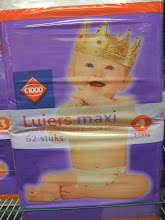This is my print with the higher film speed, so it's more of a frozen image than a blur.
For the 1st test strip I tried it at the same settings as the last print I did.
Aperture: 5.6
Filter:2
Time:32
 This was too dark, so I did a test strip at lower times.
Aperture: 5.6
Filter: 2
Time: 10 + 10 + 5...
This was too dark, so I did a test strip at lower times.
Aperture: 5.6
Filter: 2
Time: 10 + 10 + 5...
 Then I tried another test strip at 30.
Aperture: 5.6
Filter: 2
Time: 30
Then I tried another test strip at 30.
Aperture: 5.6
Filter: 2
Time: 30

These were a bit gray, so I tried a test strip with different filters.
Aperture: 5.6 Filter: 3/4 Time: 30

Then my enlarger broke, so I tried the same thing after it was fixed.
Aperture: 5.6
Filter: 3/4
Time: 30
I decided on a 3 filter, and needed to lower the time as well.
Aperture: 5.6
Filter: 3
Time: 20 + 1...
This was too light, so I did another test strip with the same settings but more time.
Aperture: 5.6
Filter:3
Time: 25 + 5...
Then I tried an A4 print at 50 seconds with the same settings.
Aperture: 5.6
Filter: 3
Time: 50
After a couple more test strips and switching enlargers, I ended up with a better quality print, although still a bit dark..
Aperture: 8
Filter: 3
Time: 50












 This is a picture of a Russian Ballet dancer practicing. Ballet is a typical dance of Russia and an icon of their culture. The lighting of this image is unusual, with the shadows peering in through the windows and revealing the city scape outside. It seems to be dusk from the angle of the lighting, which along with the dancer's passionate expression tells a nice story in the picture. Other than the shadows from the window the room is quite dark, which gives an intimate feeling. The dancer is still lit enough to be able to see detail, which makes it quite personal still. The composition of this image is interesting- the ballerina seems to be very alone in such a large, empty room, seemingly alone with her feelings and her dance. It is beautifully introspective in a sense, because the uneven lighting, spartan composition, and simple, straightforward angle all work together for an intimately beautiful piece.
This is a picture of a Russian Ballet dancer practicing. Ballet is a typical dance of Russia and an icon of their culture. The lighting of this image is unusual, with the shadows peering in through the windows and revealing the city scape outside. It seems to be dusk from the angle of the lighting, which along with the dancer's passionate expression tells a nice story in the picture. Other than the shadows from the window the room is quite dark, which gives an intimate feeling. The dancer is still lit enough to be able to see detail, which makes it quite personal still. The composition of this image is interesting- the ballerina seems to be very alone in such a large, empty room, seemingly alone with her feelings and her dance. It is beautifully introspective in a sense, because the uneven lighting, spartan composition, and simple, straightforward angle all work together for an intimately beautiful piece. 




